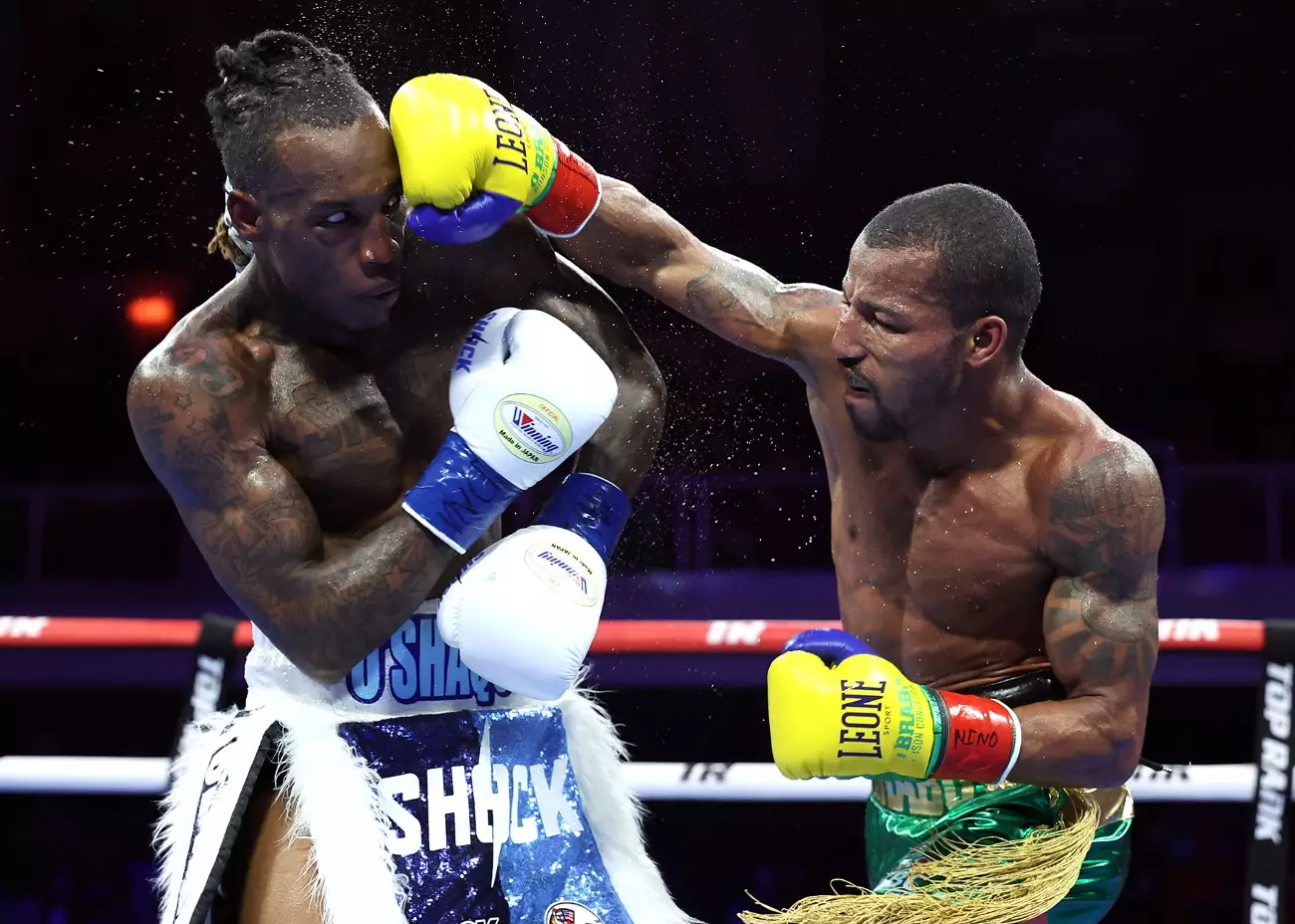By Amílcar Barnett, Ringside, Verona, NY, USA
On a November night in Central New York, O’Shaquie Foster faced off against Robson Conceicao in Mohawk Territory for a highly anticipated rematch that had fans on the edge of their seats. The bout, held at the Turning Stone Resort Casino in Verona, New York, promised high levels of skill and determination from both fighters. Despite being a closely contested fight, the final scores raised eyebrows, with Foster winning by a split decision. This result has ignited discussions about the very essence of scoring in boxing and what constitutes a fair victory.
Throughout the match, Foster showcased his technical prowess, landing more precise shots in the early rounds, while Conceicao appeared to struggle with timing and execution. However, as the fight progressed into the later rounds, it became evident that Foster’s initial momentum faded. Conceicao seized the opportunity to press his advantage, showing more aggression and activity in his punches. Observers noted that while Foster exhibited impressive skills, he lacked the knockout power that could have secured a more definitive victory. The two fighters, skilled in their own rights, engaged in a strategic battle rather than a demonstration of raw power.
The judges’ scorecards at the end of the bout—115-113 in favor of Foster for two judges and a similar 115-113 for Conceicao from the third—revealed the contentious nature of the decision. Many fans and analysts suggested that a draw would have been a more equitable outcome. The discrepancy in scoring reflected the subjective nature inherent in boxing, where judges may have differing interpretations of what constitutes dominance in a match. Such ambiguity calls into question the effectiveness of the current scoring system, particularly when neither fighter could lay claim to clear superiority over the other.
Interestingly, Foster’s fans, who previously voiced their vocal support and claims of an unjust result in his last bout, remained subdued following this most recent decision. Their reluctance to celebrate his victory was indicative of a collective acknowledgment that the win might not hold the weight it traditionally represents. The feeling among spectators was that Foster was unable to fully capitalize on his early success and succumbed to the pressure exerted by Conceicao in the latter half of the fight. This disappointment rendered the atmosphere rather somber, signaling a stark contrast to the jubilation that would typically accompany a champion’s victory.
As both fighters contemplate their next steps, the implications of this match will ripple through their careers. For Foster, the victory, albeit controversial, places him in a favorable position within the boxing community, yet raises concerns over his stamina and ability to adapt. Conversely, Conceicao, despite the narrow defeat, has demonstrated resilience and a strategic approach that may bode well for future matches. Both fighters must now reassess their strategies and identify areas for improvement as they aim for championship glory in a highly competitive landscape.
While O’Shaquie Foster may have earned a split decision victory, the nuances surrounding the fight and the implications of performance metrics ensure that the controversy will not soon fade into the background. The discussion surrounding this match may well offer opportunities for change within the sport as fans and analysts alike continue to evaluate what they expect from their champions.


Leave a Reply